Republic of Singapore travel - Singapore, Asia
Singapore, officially the Republic of Singapore, is a dynamic city-state located at the southern tip of the Malay Peninsula in Southeast Asia. Known for its strategic position, Singapore sits about 137 kilometers north of the Equator, surrounded by the Strait of Malacca to the west and the Singapore Strait to the south. This location has made Singapore one of the busiest maritime hubs in the world.
Singapore is a melting pot of cultures, primarily consisting of Chinese, Malay, and Indian communities. English, Malay, Mandarin, and Tamil are the official languages, with English serving as the common language for business and public services.
Historically, Singapore was founded as a British trading post by Sir Stamford Raffles in 1819 and gained independence from Malaysia in 1965. Since then, it has evolved into a global financial powerhouse, boasting one of the highest GDP per capita worldwide.
Population: Estimate 6,000,000 people (as of 2024)
Economy: Singapore's economy is globally recognized for its strength, driven by a business-friendly environment and robust investments in infrastructure, education, and healthcare. As one of the world’s most competitive economies, it is a hub for innovation and ranks high in human capital development.
The key sectors powering Singapore's economy include manufacturing and services, while tourism plays a vital role, contributing around 3-4% of the annual GDP. In 2023, Singapore saw a strong recovery in tourism, with international visitor arrivals reaching 13.6 million, and spending reaching nearly pre-pandemic levels.
Landmarks: Merlion Park, Marina Bay Sands, Gardens by the Bay, Singapore Flyer, Clarke Quay, Sentosa Island, Esplanade – Theaters On The Bay, Singapore Botanic Gardens, Helix Bridge
Singapore
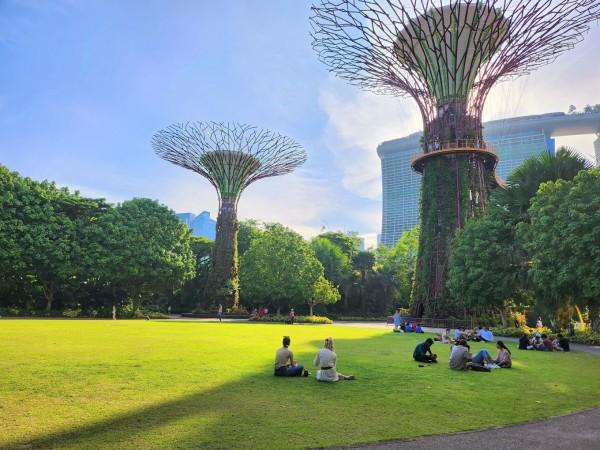
Overview of Singapore
History & Cultural Influence
Singapore's history and cultural influence have been pivotal in shaping the city-state into the global powerhouse it is today. Originally known as Temasek in the 14th century, Singapore's strategic location made it a key trading hub in the region. In 1819, Sir Stamford Raffles established a British trading post, transforming the island into a bustling port, which attracted waves of immigrants from China, India, and the Malay Archipelago.
Singapore’s colonial legacy and its fall to Japanese forces during World War II were significant events, but the island’s true transformation began post-independence in 1965. Under the leadership of Lee Kuan Yew, Singapore focused on rapid economic development, investing heavily in education, infrastructure, and foreign investment, which led to its rise as one of the world’s wealthiest nations.
Culturally, Singapore's diverse population has fostered a multicultural society where Chinese, Malay, Indian, and Eurasian influences thrive. The fusion of these cultures is reflected in its food, language, and vibrant festivals. Its blend of colonial architecture and modern skyscrapers mirrors its rich history and forward-looking growth, while the government's emphasis on bilingualism and technical education has ensured its place as a leading global city.
Interaction with The Locals
When visiting Singapore, you’ll find the locals warm, friendly, and accustomed to interacting with tourists. Singapore is a diverse blend of cultures, primarily Chinese (75.9%), Malay (15.0%), and Indian (7.5%). English is spoken everywhere, making communication easy for travelers, though many Singaporeans also speak their ethnic language, and you might even hear some "Singlish" — a quirky mix of English with local dialects.
People here are generally polite and willing to help with directions or recommendations. Singapore’s multicultural society shines through in everything from food to festivals, reflecting its blend of Chinese, Malay, Indian, and Western influences. Respect for personal space and following rules is highly valued, so be mindful of cultural norms like removing your shoes before entering homes or religious sites. And don’t miss the vibrant hawker centers, where food is at the heart of Singaporean culture, offering a taste of this city’s incredible diversity.
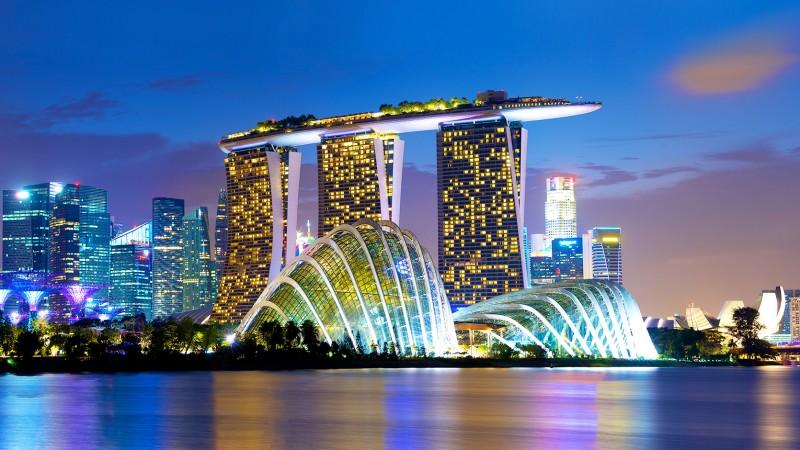
Marina Bay Sands - © gather
Top Attractions in Singapore
Singapore offers a blend of modern attractions and cultural heritage that captivates travelers. Marina Bay Sands and Gardens by the Bay showcase the city's futuristic skyline, while Sentosa Island provides family-friendly entertainment and relaxation. For a deeper cultural experience, visitors can explore Chinatown’s vibrant markets or admire Southeast Asian art at the National Gallery Singapore.
Marina Bay Sands
Location: 10 Bayfront Avenue, Singapore 018956
Marina Bay Sands is an iconic part of Singapore’s skyline, offering a luxurious mix of entertainment, shopping, and fine dining all under one roof. The highlight is the Sands SkyPark, where you can enjoy breathtaking views of the city and Marina Bay. Whether you're here to relax at the infinity pool, shop at designer boutiques, or catch a show, this resort has it all.
Gardens by the Bay
Location: 18 Marina Gardens Dr, Singapore 018953
This futuristic garden is a blend of nature and innovation, featuring towering Supertrees and massive conservatories like the Flower Dome and Cloud Forest. Spanning over 101 hectares, it’s a paradise for nature lovers and photography enthusiasts alike. With vibrant floral displays and awe-inspiring landscapes, Gardens by the Bay offers a peaceful yet visually stunning escape from the urban hustle.
Merlion Park
Location: 1 Fullerton Rd, Singapore 049213
At Merlion Park, you’ll find the iconic Merlion statue—a must-see for any visitor to Singapore. The Merlion, with its lion head and fish body, is a nod to the city’s origins as a fishing village and its transformation into the Lion City. With sweeping views of Marina Bay, this waterfront park is perfect for an evening stroll, especially when the city lights come alive.
Singapore Botanic Gardens
Location: 1 Cluny Rd, Singapore 259569
A serene escape from the city, the Singapore Botanic Gardens is a UNESCO World Heritage Site and a lush haven of greenery. Established in 1859, it’s home to the National Orchid Garden and over 10,000 plant species. Perfect for a leisurely walk, a family picnic, or simply enjoying the tranquility, this garden offers a peaceful retreat amidst the city's hustle and bustle.
Sentosa Island
Location: Sentosa Island, Singapore
Just a short trip from the city, Sentosa Island is a hub of fun and relaxation. Whether you're hitting the beaches, visiting Universal Studios Singapore, or exploring the S.E.A. Aquarium, there’s something for everyone. Adventure seekers can try zip-lining or bungee jumping, while those looking to unwind can relax at a beachside bar.
Chinatown
Location: Chinatown, Singapore
Chinatown is a vibrant mix of history, culture, and food. Wander through its bustling streets, where old meets new, and explore the beautiful Buddha Tooth Relic Temple. Sample authentic local dishes at the nearby hawker centers or shop for unique souvenirs. This lively district is a must-visit for anyone wanting to experience Singapore’s rich cultural tapestry.
National Gallery Singapore
Location: 1 St Andrew's Rd, Singapore 178957
Housed in two historic buildings, the National Gallery Singapore is a treasure trove of Southeast Asian art. From the colonial-era architecture to the diverse exhibitions, the gallery showcases the rich cultural heritage of Singapore and its neighboring countries. It’s a perfect spot for art lovers and history buffs looking to dive deep into the region’s creative legacy.
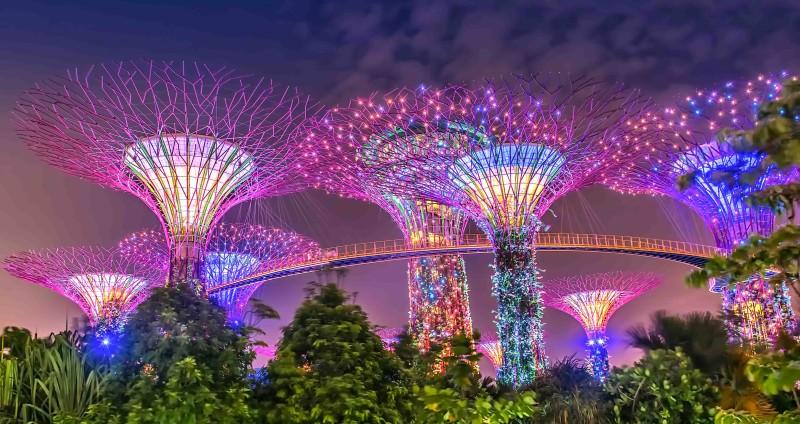
Gardens by the Bay - © gather
Must-Try Dishes in Singapore
Singapore is a food lover’s paradise, offering a rich blend of flavors that reflect its multicultural heritage. Must-try dishes include Hainanese Chicken Rice, a national favorite, and the famous Chilli Crab, known for its sweet and spicy sauce. Don’t miss out on Laksa, a spicy noodle soup, or Char Kway Teow, a smoky stir-fried noodle dish that’s sure to satisfy.
Hainanese Chicken Rice
Often hailed as Singapore’s national dish, Hainanese Chicken Rice is a simple yet incredibly flavorful meal. Tender poached chicken is served with fragrant rice cooked in chicken broth, accompanied by chili sauce, ginger, and dark soy sauce. It’s a must for any visitor wanting to taste authentic local fare.
Chilli Crab
A Singaporean classic, Chilli Crab is a sweet, spicy, and savory dish where fresh crabs are smothered in a tangy tomato and chili sauce. Despite its fiery name, it’s not overly spicy, but it packs plenty of flavor. Make sure to mop up the sauce with fried buns or mantou!
Laksa
Laksa is a rich, coconut-based curry noodle soup that blends Chinese and Malay flavors. It’s made with rice noodles, shrimp, fish cakes, and sometimes chicken or egg, all simmered in a fragrant, spicy broth. The dish varies from region to region, but the Singaporean version, Katong Laksa, is a local favorite.
Char Kway Teow
This stir-fried noodle dish is a smoky, savory mix of flat rice noodles, Chinese sausage, prawns, and eggs, tossed in a rich soy sauce. The flavors are bold and comforting, making it a popular choice at hawker centers across the city.
Satay
Satay is Singapore’s take on skewered and grilled meat, usually chicken, beef, or lamb. Served with a side of peanut sauce, cucumber, and onions, it’s a favorite for those who love smoky, char-grilled flavors with a touch of sweetness.
Kaya Toast
For a truly local breakfast, try Kaya Toast. This simple but delicious snack consists of toast slathered with kaya (a coconut and egg jam) and butter. It’s usually served with soft-boiled eggs and a cup of kopi (coffee), making it a nostalgic treat for many Singaporeans.
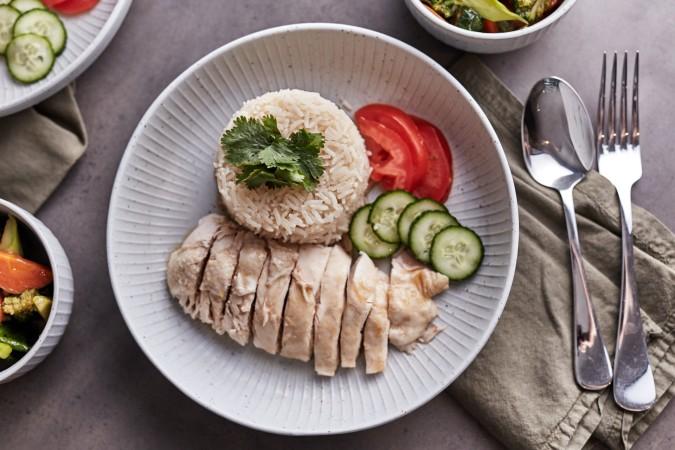
Hainanese Chicken Rice - © Michele Shellie
Weather in Singapore: Best Time to Visit
Average Temperatures
Singapore enjoys a tropical rainforest climate, which means warm and humid weather throughout the year. Average daily temperatures typically range from:
- Daytime highs: 29°C to 33°C (84°F to 91°F)
- Nighttime lows: 23°C to 26°C (73°F to 79°F)
The hottest months are typically from April to May, with temperatures often reaching the higher end of this range. However, due to its proximity to the equator, Singapore doesn’t experience extreme seasonal changes, so temperatures remain fairly consistent year-round.
Rainfall
- Singapore receives significant rainfall all year, but the wettest months fall between November and January, coinciding with the Northeast Monsoon. During this period, you can expect heavy showers and thunderstorms, with November usually being the wettest month.
- The driest months tend to be February and March, though brief, sudden showers are common even during these months.
Best Time to Travel
The best time to visit Singapore is generally between February and April, during the “drier” season, when rainfall is lighter, and humidity is lower. This period offers more pleasant conditions for outdoor activities and sightseeing. However, given the mild temperature fluctuations, Singapore is a year-round destination.
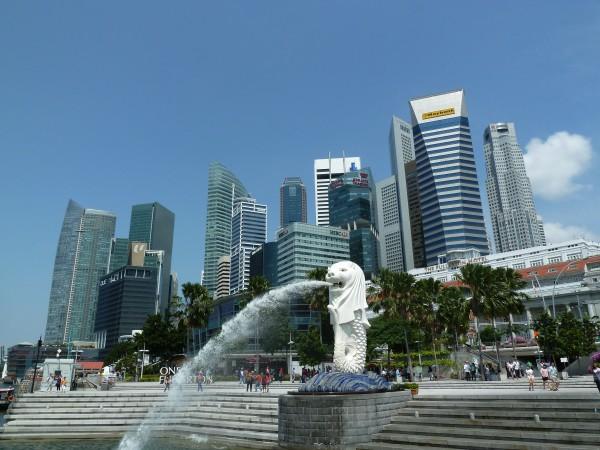
Merlion Park - © ペウゲオト
Festivals & Local Celebrations
Chinese New Year
Time of Year: Late January or February (based on the lunar calendar)
Chinese New Year is one of the most colorful and important celebrations in Singapore, especially in areas like Chinatown. Visitors can expect dazzling light displays, street decorations, and a festive atmosphere. Highlights include the Chingay Parade, a stunning display of floats, dancers, and performers; the River Hongbao Festival with giant lanterns and cultural performances; and vibrant markets where traditional snacks and decorations are sold. Lion dances, fireworks, and family gatherings are also central to the celebration.
Deepavali (Festival of Lights)
Time of Year: October or November (date varies annually)
Celebrated primarily in Little India, Deepavali marks the triumph of light over darkness in Hindu culture. The streets come alive with radiant light displays, colorful decorations, and festive bazaars selling Indian sweets, clothes, and jewelry. Visitors can also enjoy traditional performances, visit temples such as Sri Veeramakaliamman Temple to witness religious rituals, and savor authentic Indian cuisine in local restaurants. The atmosphere is joyful, and the vibrant rangoli (colored floor art) competitions add a touch of artistic beauty to the celebration.
National Day
Time of Year: August 9th
Singapore’s National Day celebrates the nation’s independence with grand patriotic fervor. The day’s centerpiece is the National Day Parade, a spectacle of military displays, cultural performances, and a breathtaking fireworks show over Marina Bay. Visitors will see Singapore draped in red and white, with community events, concerts, and patriotic songs resonating throughout the city. It’s a great time to experience Singaporean pride firsthand and participate in festivities alongside locals.
Hari Raya Puasa (Eid al-Fitr)
Time of Year: Varies (based on the Islamic calendar)
Hari Raya Puasa is celebrated by Singapore’s Muslim community at the end of Ramadan. The Geylang Serai area transforms into a festive hub with a night market offering traditional Malay foods, clothing, and crafts. Visitors can experience the Hari Raya Bazaar, where they can indulge in Malay delicacies like rendang and kuih, and witness mosques filled with worshippers for morning prayers. The streets are lit up, and the sense of community is strong, making it a welcoming festival for all to experience.
Singapore Food Festival
Time of Year: July
For food enthusiasts, the Singapore Food Festival is a must-visit. This month-long celebration highlights the city’s diverse culinary heritage, with events like food tours, cooking workshops, and street food festivals. Visitors can sample both traditional and modern fusion dishes, meet local chefs, and immerse themselves in the vibrant hawker culture. It’s the perfect time to explore Singapore’s famed food scene, from hawker center favorites to fine dining experiences.
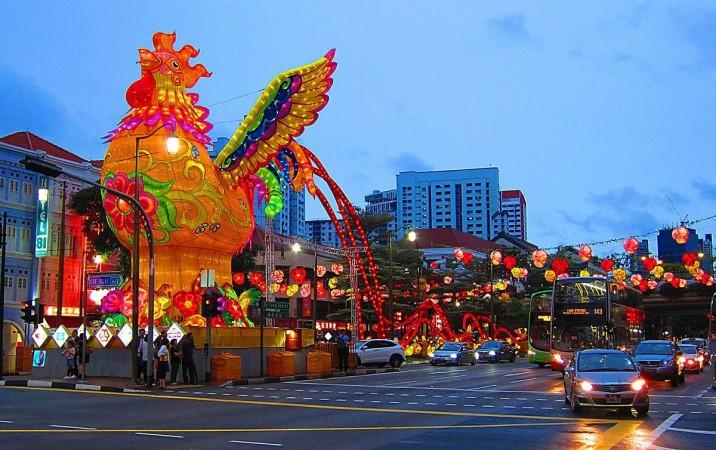
Chinese New Year - © gather
What to Do in Singapore
Explore Marina Bay Sands
Marina Bay Sands is a must-visit for its iconic architecture and breathtaking views of Singapore's skyline. Take a dip in the world-famous infinity pool (for hotel guests) or visit the SkyPark Observation Deck for panoramic views. The resort also offers luxury shopping, fine dining, a casino, and the ArtScience Museum with captivating exhibitions.
Visit Gardens by the Bay
Adjacent to Marina Bay, this futuristic garden is a horticultural masterpiece. Wander through the Supertree Grove and catch the nightly Garden Rhapsody light show. Explore the climate-controlled Flower Dome and Cloud Forest, where you can marvel at diverse plant species from around the globe. It’s a nature-lover’s paradise in the heart of the city.
Stroll Through Orchard Road
Orchard Road is Singapore’s premier shopping destination, offering a mix of luxury brands, high-street fashion, and quirky local boutiques. The tree-lined boulevard is also home to various dining options and entertainment complexes. It’s the perfect place to indulge in some retail therapy.
Immerse in Culture at Chinatown, Little India, and Kampong Glam
Singapore’s vibrant cultural districts provide a glimpse into the city's rich multicultural heritage.
- In Chinatown, explore the stunning Buddha Tooth Relic Temple, shop for souvenirs, and enjoy delicious street food.
- Little India offers colorful streets, bustling markets, and temples like the Sri Veeramakaliamman Temple. Don’t forget to try some authentic Indian food.
- In Kampong Glam, visit Sultan Mosque and wander through Haji Lane, known for its street art, quirky cafes, and boutiques.
Relax on Sentosa Island
Sentosa Island is Singapore’s playground, with beaches, resorts, and family-friendly attractions. Visit Universal Studios Singapore for thrilling rides and shows, cool off at Adventure Cove Waterpark, or marvel at marine life in S.E.A. Aquarium. For those looking to relax, Sentosa’s beaches offer a laid-back escape from the bustling city.
Cruise Down the Singapore River
Take a boat cruise along the Singapore River to see the city’s key landmarks like Clarke Quay, Boat Quay, and Merlion Park. This relaxing experience offers a different perspective of the city’s mix of colonial and modern architecture, especially beautiful during the evening.
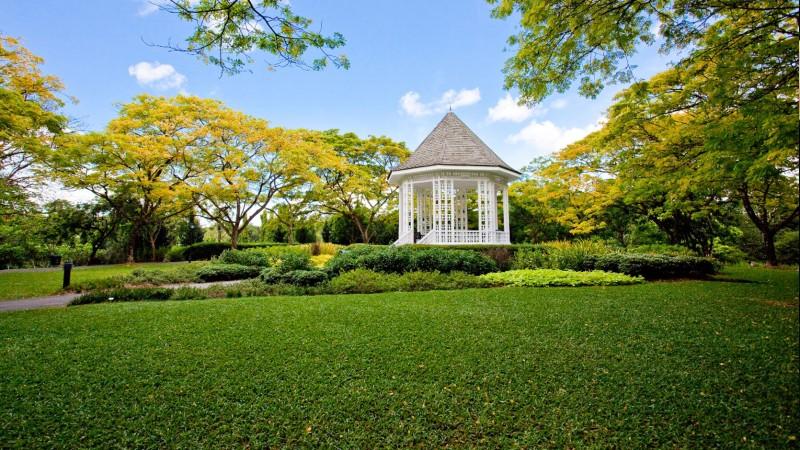
Singapore Botanic Gardens - © gather
Culture Etiquette in Singapore
Greeting and Respect
In Singapore, a polite handshake is a common greeting, though older generations may appreciate a nod or slight bow. When addressing someone older or in a formal setting, showing respect by using proper titles is appreciated. For example, Chinese Singaporeans may use "Uncle" or "Auntie" as respectful terms for older people, even if they’re not related.
Respect for Elders
Respecting elders is a significant aspect of Singaporean culture. Always greet older individuals first, allow them to speak without interruption, and offer them a seat when available.
Dress Code
Singapore is a modern and cosmopolitan city, but dressing modestly is expected, especially when visiting religious sites such as temples and mosques. It’s customary to cover shoulders and knees, and you’ll need to remove your shoes before entering homes, mosques, and some temples.
Public Behavior
Singaporeans value politeness and calmness. Raising your voice or public displays of anger are frowned upon. Public displays of affection, while not illegal, are also generally avoided, especially in more conservative areas. Maintaining a respectful and calm demeanor is important in public spaces.
Dining Etiquette
When dining in Singapore, particularly in local households, it’s customary to wash your hands before and after meals. If dining in a traditional setting or with locals, use your right hand for eating and passing food, as the left hand is considered unclean. In hawker centers and restaurants, it’s polite to clean up your table when you finish eating, especially if you’ve used trays.
Religious Respect
Singapore is a multi-religious society, with Buddhism, Islam, Christianity, Hinduism, and Taoism being widely practiced. Always show respect when visiting places of worship. Dress appropriately, remain quiet, and avoid taking photos in restricted areas. Never point your feet towards altars, and remove your shoes before entering mosques and some temples. When visiting Buddhist temples, avoid touching religious statues or objects.
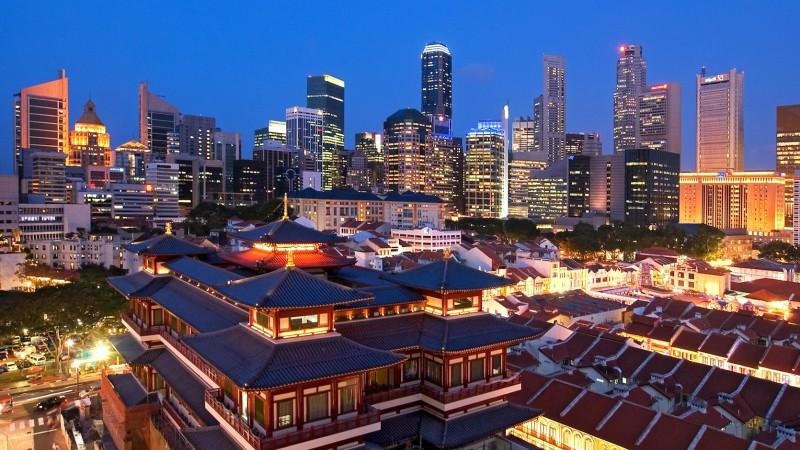
Singapore Chinatown - © gather
Essential Travel Information
Getting to Pakse Singapore
Airport Transfers from Changi Airport
Arriving at Changi Airport have several convenient options to get to the city center or other destinations. Private airport transfers, offered by companies like SIXT, Transfeero, and Blacklane, provide pre-booked rides with fixed rates. These services typically start at around $22-$31 for a sedan, offering comfort and convenience. Taxis are another easy option, available at taxi stands located outside each terminal. For a more affordable route, the Mass Rapid Transit (MRT) system directly connects Changi Airport to various parts of Singapore, making public transit a cost-effective and efficient choice.
Getting Around Singapore
Public Transit
Singapore boasts an extensive and well-connected public transit system. The MRT (Mass Rapid Transit) is the city’s primary rail network, covering most key areas and attractions, providing a quick and affordable way to explore the island. Buses also complement the MRT system, reaching places the trains might not.
Taxis
Taxis are widely available throughout Singapore and can be hailed on the street, at designated taxi stands, or via booking apps. Major taxi companies like ComfortDelGro, SMRT, and TransCab offer reliable services. Taxis are metered, but surcharges may apply during peak hours or for specific areas.
Ride-Hailing Services
Grab is the dominant ride-hailing app in Singapore, providing both regular car rides and premium options. Other ride-hailing services like Gojek and Ryde are also available, offering more options for visitors seeking convenience.
Other Options
Bicycle rentals are available for short trips or leisurely rides, especially in scenic areas like Marina Bay or East Coast Park. Singapore's compact size and well-maintained sidewalks also make walking a pleasant way to get around, especially in neighborhoods like Chinatown or Little India.
ATM and Banking Services in Singapore
Singapore offers a wide range of ATM and banking services that cater to both locals and international visitors. Whether you’re looking to withdraw cash, make payments, or access other banking facilities, Singapore’s banking infrastructure is modern and reliable.
Major Banks Operating in Singapore
- Citibank
- OCBC (Oversea-Chinese Banking Corporation)
- DBS (Development Bank of Singapore)
- UOB (United Overseas Bank)
- HSBC
- State Bank of India
These banks are well-established in Singapore and provide access to a wide network of ATMs and banking services throughout the island.
ATM Networks and Availability
- Citibank ATMs: Citibank operates ATMs throughout Singapore, many of which are available 24/7, providing convenient access for both locals and tourists.
- HSBC ATMs: HSBC offers Express Banking lobbies with ATMs and multi-function machines that provide a variety of services beyond just cash withdrawals.
- atm5 Network: This network is an alliance of six banks: HSBC, Bank of China, Citibank, Maybank, Standard Chartered, and the State Bank of India. Customers from any of these banks can use ATMs within the atm5 network with no additional transaction fees. This is especially helpful for avoiding unnecessary charges during your stay.
ATM Services
Singapore's ATMs provide a broad range of services, including:
- Cash Withdrawals: Daily limits vary by bank and account type, but you can generally withdraw up to the equivalent of a few thousand Singapore dollars.
- Balance Inquiries: Check your account balance at any ATM.
- Fund Transfers: Easily transfer money between accounts within the same bank.
- Bill Payments: Pay bills directly at ATMs, an added convenience for locals and long-term visitors.
- Account Statement Requests: Some machines allow you to request mini-statements for quick reviews of recent transactions.
Specialized Services
Citibank: Citibank offers a feature where customers can activate overseas usage for their ATM cards, ensuring hassle-free access to funds while traveling.
- HSBC: With Dynamic Currency Conversion, HSBC ATMs allow foreign cardholders to convert currencies directly at the ATM, making international transactions easier for travelers.
- Maybank: Maybank offers cash deposit services at their ATMs and dedicated Cash Deposit Machines, providing more flexibility for transactions.
Banking Hours
While most ATMs are accessible 24 hours a day, bank branches typically operate from around 9:30 AM to 5:00 PM on weekdays. Some branches offer extended or weekend hours, especially in high-traffic areas like Orchard Road or the central business district.
Tips for Using ATMs in Singapore
- When using a foreign-issued card, always choose the option to be charged in local currency (SGD) to avoid unfavorable exchange rates.
- Most ATMs in Singapore accept 4-digit PINs; however, a few may also accept 6-digit PINs, so make sure to check if your card is compatible before traveling.
- It’s a good idea to bring some cash in USD or EUR for exchange at banks or exchange bureaus, as this may offer better rates than withdrawing large amounts from ATMs.
Articles for you
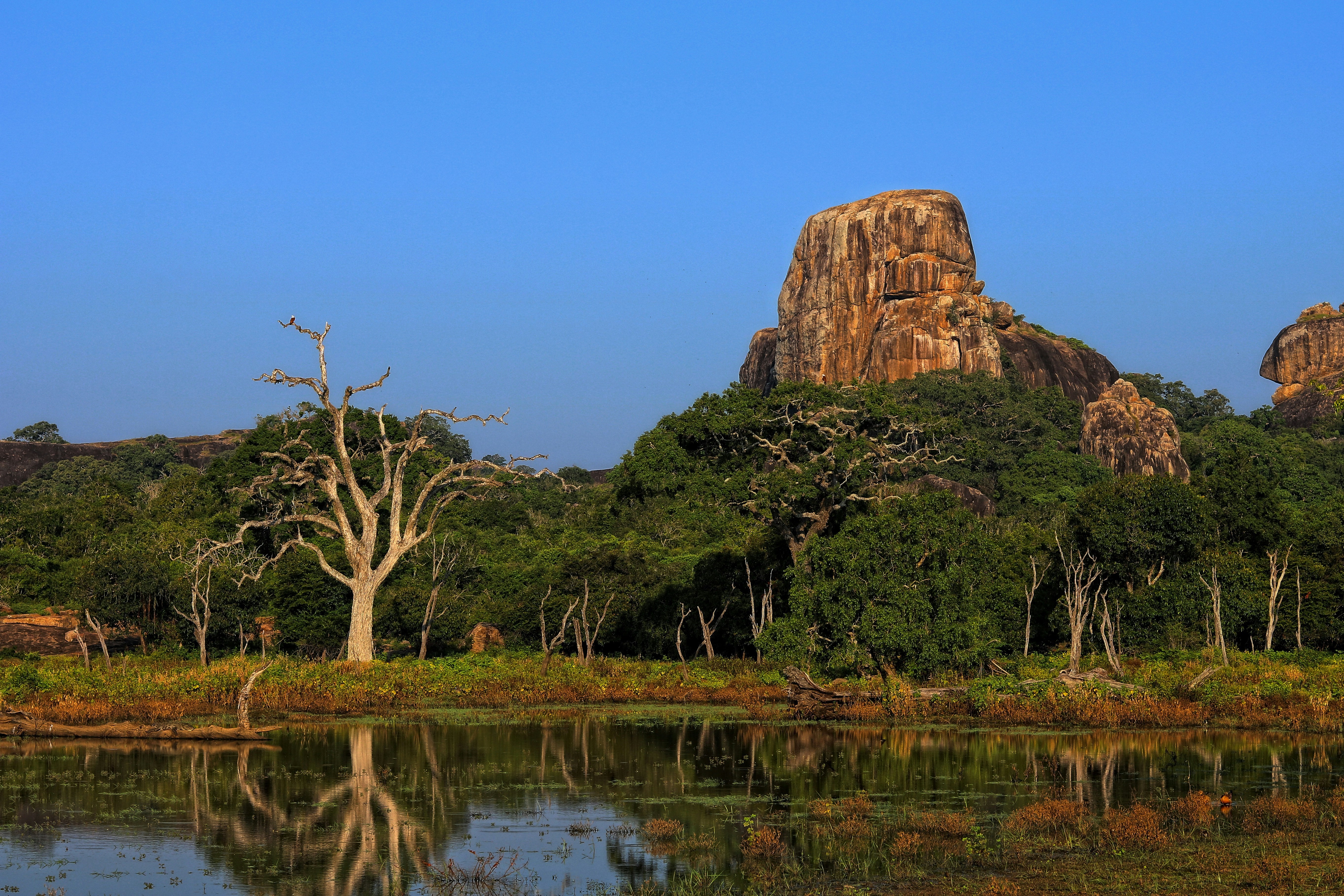
Explore Yala National Park - Sri Lanka Travel, Asia
Tucked away in Sri Lanka’s southeastern corner, Yala National Park is where wild nature meets deep tradition. Known worldwide for its leopard population, the park is also home to elephants, sloth bears, crocodiles, and hundreds of bird species. Beyond wildlife, Yala opens doors to a cultural landscape dotted with ancient temples, Buddhist ruins, and coastal villages. For travelers seeking more than just a safari, Yala offers a chance to explore eco-tourism, local communities, and sacred heritage sites.
Population: The Yala National Park area doesn’t have a human population.
Economy: The economy around Yala National Park thrives on a blend of eco-tourism, agriculture, and local services. Safari tours, eco-lodges, and cultural experiences drive steady income for nearby towns like Tissamaharama and Kataragama, supporting thousands of families.
Landmarks: Famous for Block I of Yala and wildlife encounters, including elephants, sloth bears, crocodiles, and exotic bird species.
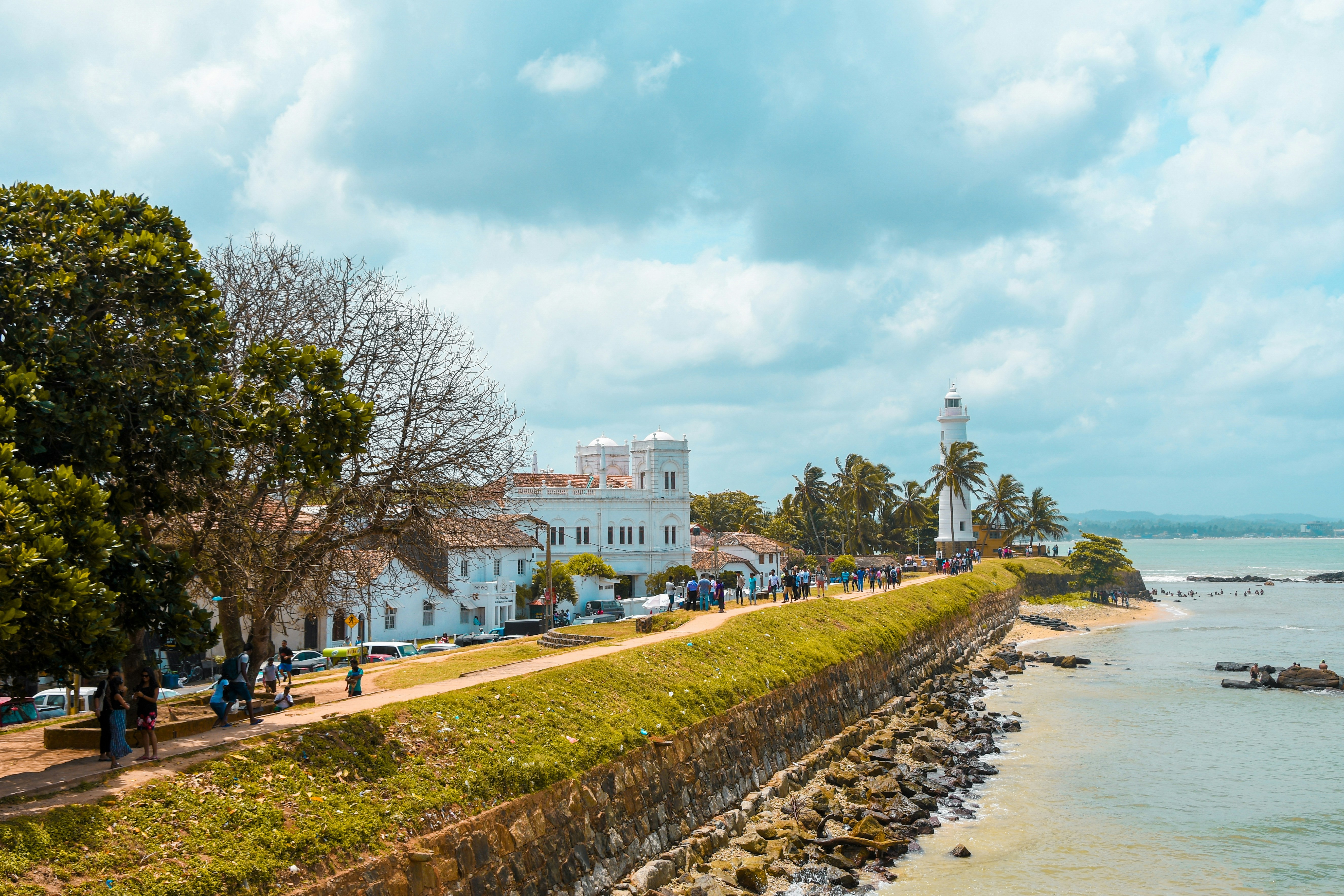
Explore Galle - Sri Lanka Travel, Asia
Nestled on Sri Lanka’s southern coastline, Galle is a vibrant city where history meets the sea. Its cobbled streets, colonial architecture, and serene beaches make it a must-visit destination for travelers seeking a blend of culture, adventure, and relaxation. A UNESCO World Heritage site, Galle captivates visitors with its Dutch Fort, bustling markets, and friendly locals. Whether you’re exploring the ramparts at sunset or savoring fresh seafood by the shore, Galle promises an unforgettable journey into Sri Lanka’s heritage.
Population: Approximately 113,000 in 2023.
Economy: Galle’s economy thrives on tourism, trade, and fisheries. The city’s historic fort, colonial architecture, and coastal charm draw thousands of international visitors each year, making tourism its main economic driver. Fishing remains vital for local livelihoods, supplying fresh seafood across the region.
Landmarks: Famous for the Galle Fort, Dutch Reformed Church & Maritime Museum, and Unawatuna Beach.
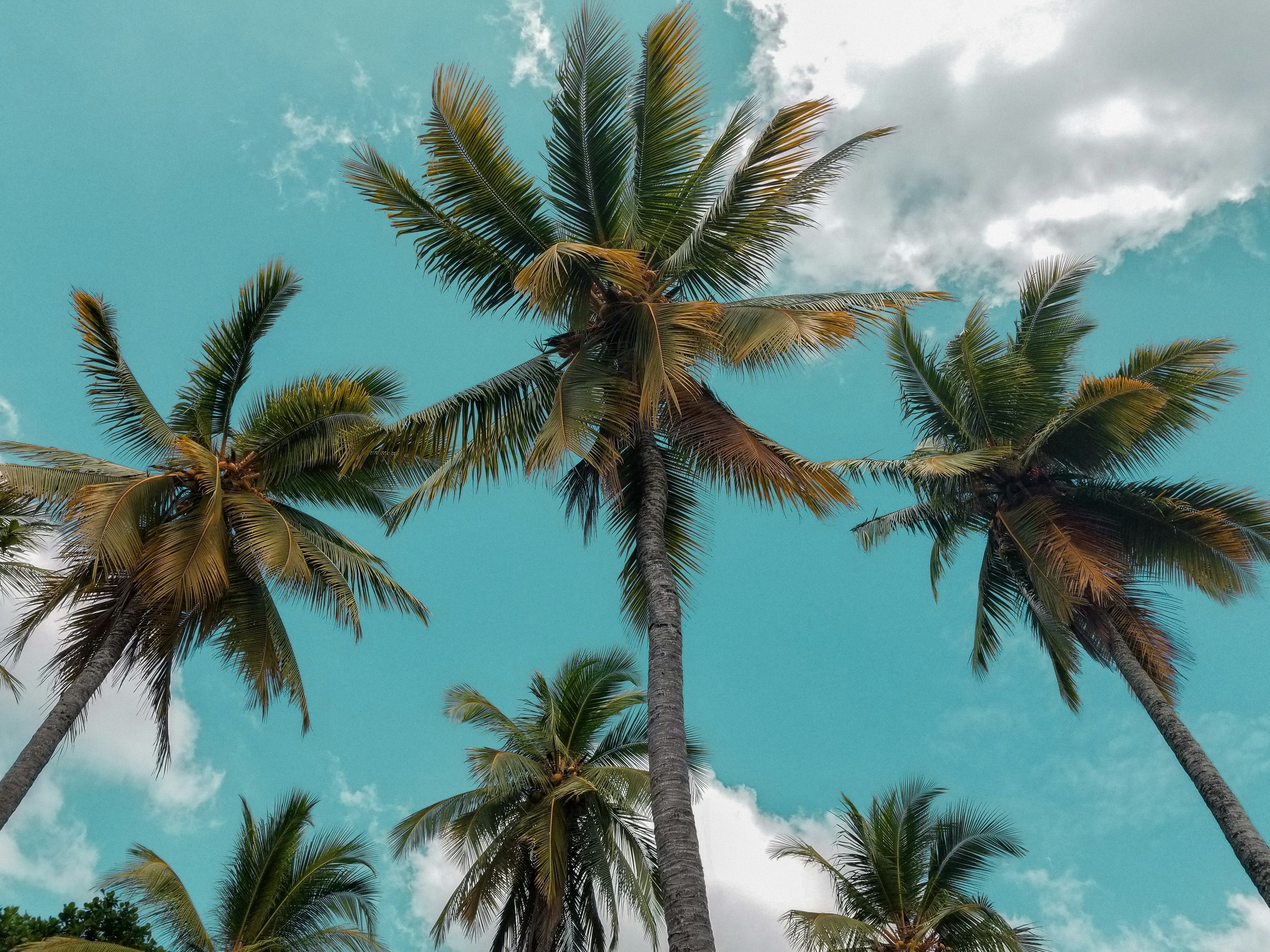
Explore Bentota - Sri Lanka Travel, Asia
Nestled along Sri Lanka’s southwestern coast, Bentota is a tropical paradise that blends golden beaches, vibrant culture, and thrilling adventures. Famous for its calm waters, luxury resorts, and scenic river estuary, Bentota has become a top destination for travelers seeking both relaxation and authentic experiences. From serene beach walks at sunrise to adrenaline-pumping water sports, this coastal town offers a perfect balance of leisure and exploration. With its proximity to Colombo and Galle, Bentota is easy to reach, making it an ideal stop for both short escapes and extended holidays.
Population: Approximately 37,000 in 2023.
Economy: Bentota’s economy thrives mainly on tourism, which drives local businesses such as hotels, restaurants, and wellness retreats. The town also benefits from fishing, coconut cultivation, and handicrafts like wood carving and batik textiles. Many residents rely on the growing demand for water sports and Ayurvedic treatments, making tourism the backbone of both income and employment in the area.
Landmarks: Famous for Bentota Beach, Bentota River Safari, and Kande Vihara Temple.
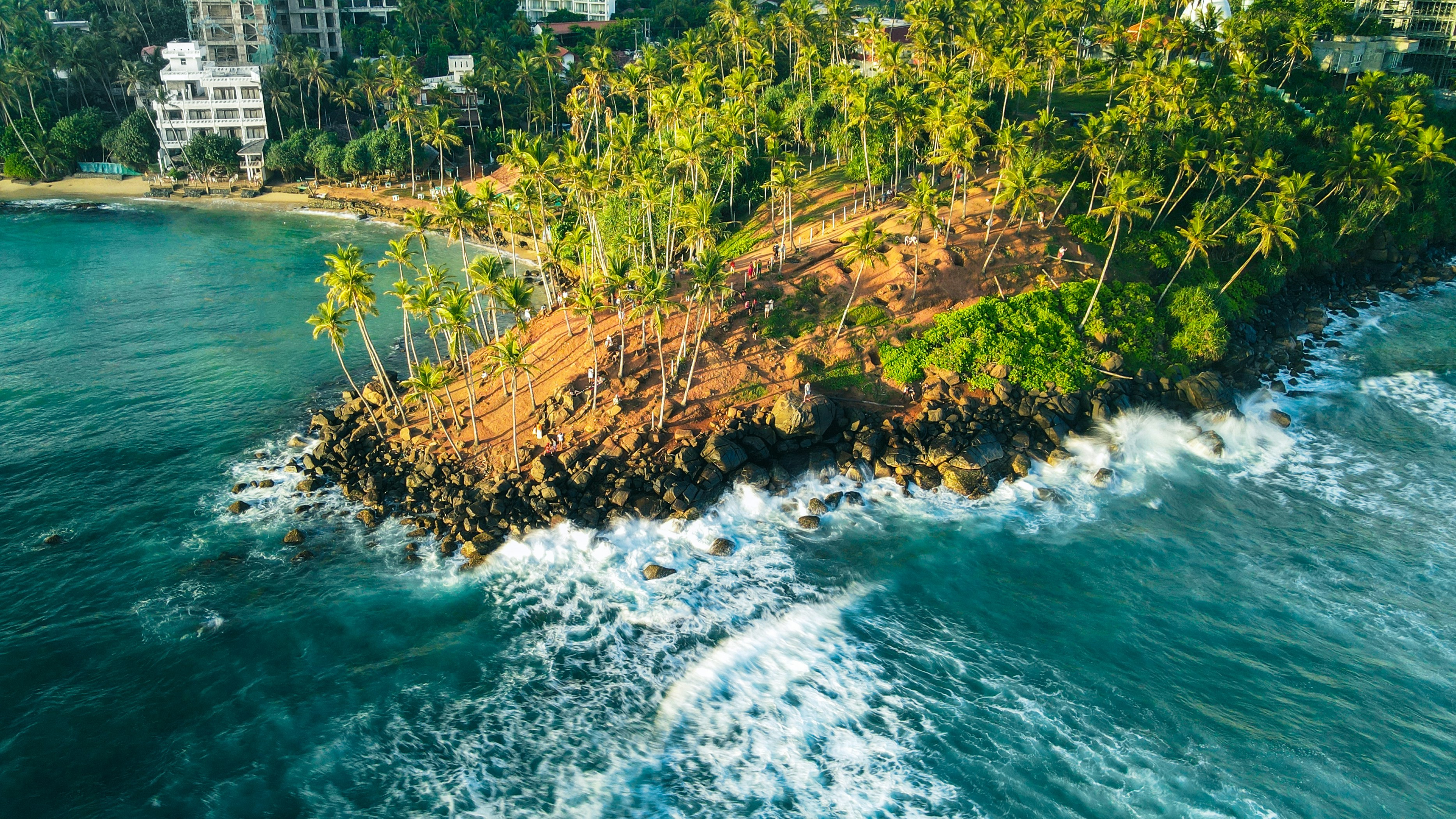
Explore Mirissa - Sri Lanka Travel, Asia
Mirissa is a charming coastal town on Sri Lanka’s southern shoreline. Known for its golden beaches, turquoise waters, and vibrant marine life, it has become a must-visit stop for travelers exploring the island. Many come for whale watching, surfing, and sunset views at Coconut Tree Hill, but Mirissa offers much more than postcard beauty. The fishing boats you see anchored by the bay carry generations of stories. Local traditions, delicious cuisine, and a laid-back rhythm of life shape every visitor’s experience.
Population: Approximately 4,700 in 2023.
Economy: Mirissa’s economy is largely shaped by its coastal location. Fishing has long been the backbone of local livelihoods, with generations relying on the Indian Ocean for income. In recent decades, tourism has become the main driver of growth, thanks to whale watching, surfing, and beachside hospitality.
Landmarks: Famous for Mirissa Beach, Coconut Tree Hill, and Parrot Rock Bridge.
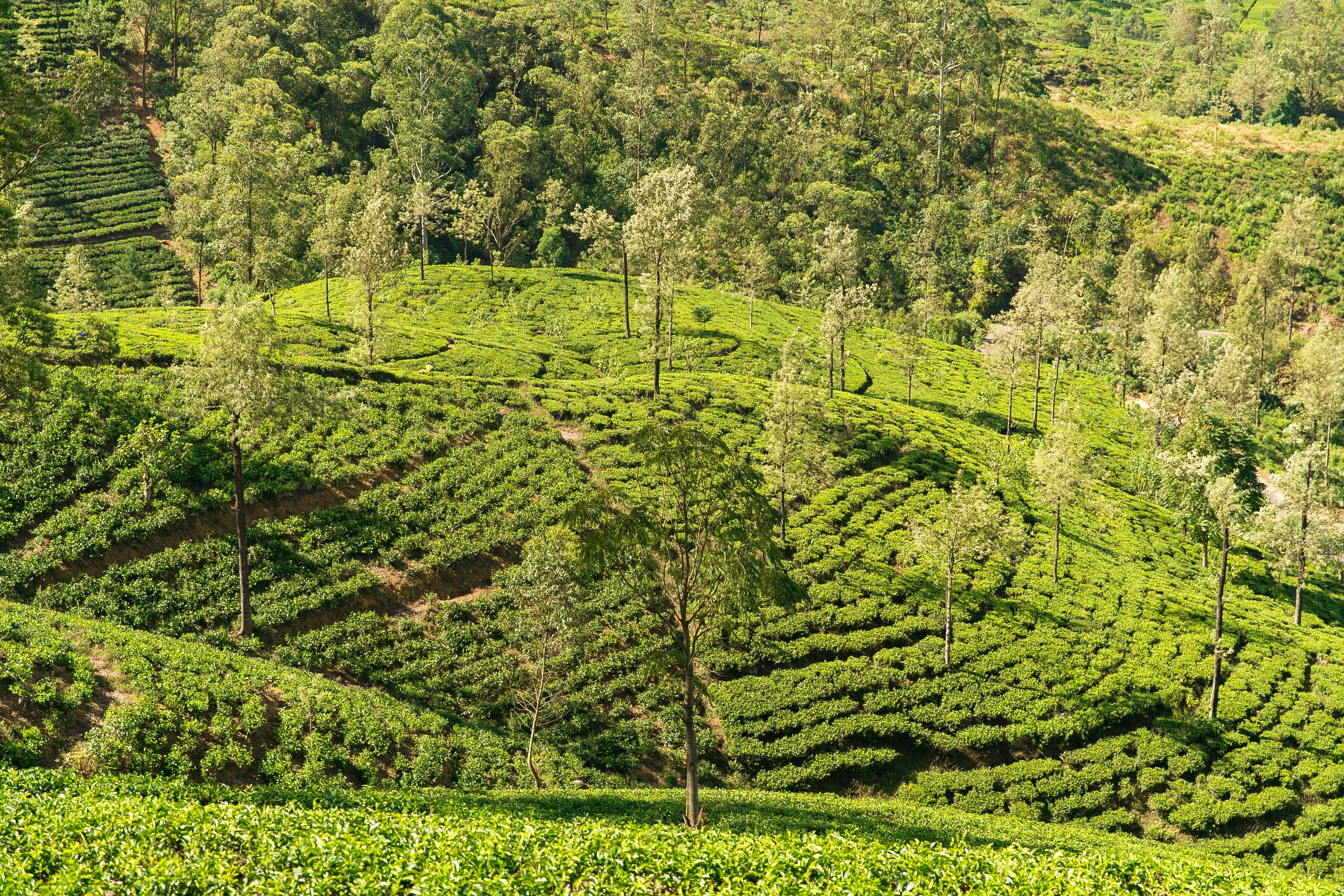
Explore Nuwara Eliya - Sri Lanka Travel, Asia
Tucked away in the Central Highlands of Sri Lanka, Nuwara Eliya is often called “Little England”. With its rolling tea plantations, cool misty mornings, and colonial charm, this mountain town feels like a step into another world. Travelers come here to breathe fresh air, walk through flower gardens, sip the finest Ceylon Tea, and enjoy a pace of life far from the island’s busy cities. Whether you’re drawn by scenic landscapes, heritage architecture, or the warmth of its people, Nuwara Eliya is a destination that blends nature, culture, and history in perfect harmony.
Population: Approximately 781,000 in 2023.
Economy: Nuwara Eliya’s economy thrives mainly on tea production, as it sits in the heart of Sri Lanka’s central highlands, famous worldwide for Ceylon Tea. The city also benefits from a growing tourism industry, attracting visitors with its colonial charm, cool climate, and scenic landscapes.
Landmarks: Famous for Gregory Lake, Hakgala Botanical Garden, and Victoria Park.
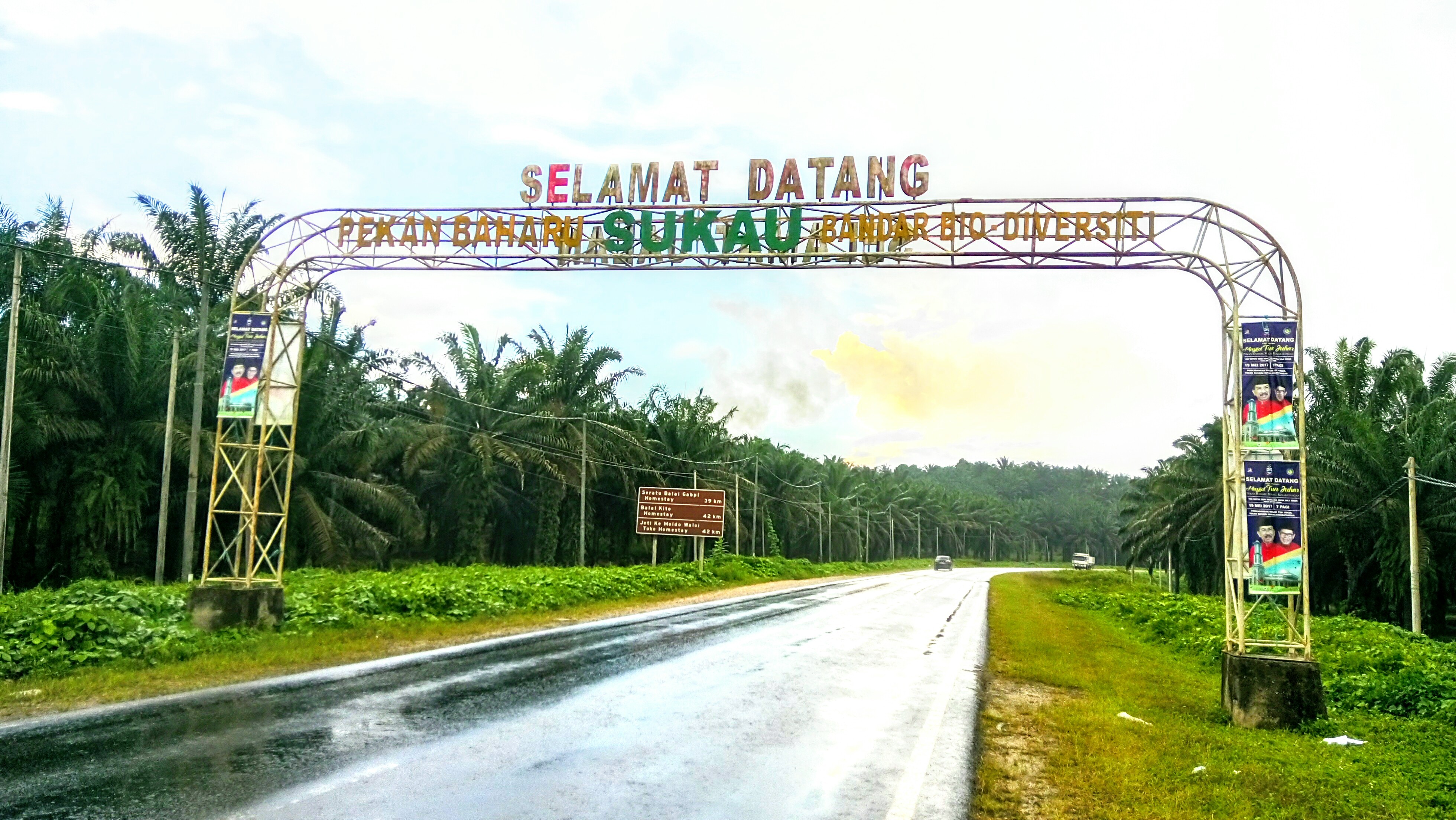
Explore Sukau - Malaysia Travel, Asia
Nestled on the banks of the Kinabatangan River in Sabah, Malaysian Borneo, Sukau is a destination where wildlife, culture, and conservation come together. Known as one of Asia’s top spots for river safaris and eco-tourism, this quiet village offers a front-row seat to encounters with Bornean orangutans, pygmy elephants, proboscis monkeys, and exotic birdlife.
Population: Approximately 1,400 in 2019.
Economy: Sukau’s economy is shaped by its riverine location and natural resources. Traditionally, the Orang Sungai community relied on fishing, small-scale farming, and forest gathering for their livelihood. Today, the village has shifted toward eco-tourism, with river cruises, jungle trekking, and homestays providing income.
Landmarks: Famous for the Kinabatangan River cruises, Gomantong Caves, and Ox-bow lakes and wetlands.
